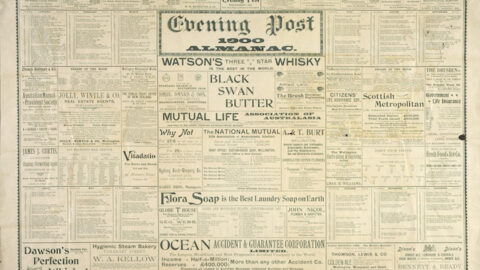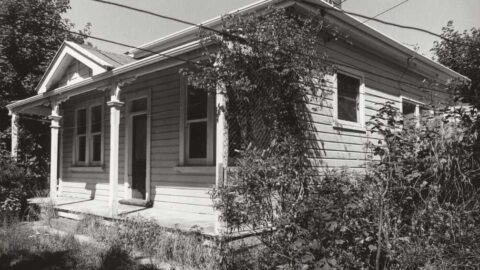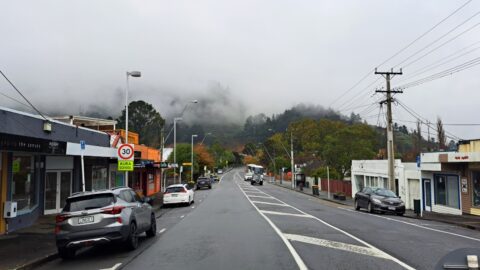WAINUI-O-MATA WATER WORKS.
MESSRS BAIRD AND WARD IN REPLY.
Messrs Baird and Ward have forwarded to the City Council their reply to the last paragraph of the Waterworks Inquiry Committee, and also to the City Surveyor’s (Mr Loughrey) criticisms on their former report.
They begin by stating that they intended to reply more fully to the last paragraph of the Waterworks Inquiry Committee’s report, and state that they fail to see anything in their report to call forth such language as used by Mr Loughrey, that “grave misstatements and misrepresentations reflecting upon himself, and of wilfully distorting facts to his own prejudice.”
They noticed the various reports of Messrs Marchant, Stewart, and Higginson, and where they saw cause differed from them. They expressed the opinion which most people at all conversant with the subject are well aware of, “that if the works had been properly maintained for the last three and a half years no Committee of Inquiry would have been needed. The leaks in the water race might have been difficult to discover, but there is no doubt they would have been discovered and repaired long ago.”
They did not think they could be accused of writing too much upon the subject, although they consider they had most cause.
They go on to say that the Committee of the Council, being guided, no doubt, to a great extent by the statements of their Special Commissioner (Mr Higginson) as well as by their own practical knowledge and common sense, commence their report with the sentence, “The Committee are pleased to report that there is no grave defect in any part of the Wainui-o-mata waterworks.”
They refer to the paragraph in the Committee’s report in reference to an examination and test of the works before the water was turned on into the town, in connection with which they (the Committee) found records in the City Surveyor’s department that the water was turned through the race several times before Mr Baird left office, firstly, from small streams, and on the 23rd January, 1884, from the reservoir itself.
The full text in their former report on this subject was as follows: — “With reference to Mr Loughrey’s concluding remarks, viz., ‘That the concrete race and sluice channel were passed and taken over before I assumed office,’ he must have known that Mr Baird never had an opportunity of testing these works at all, as he left the Corporation before the water was turned into the race, the dam not being finished at the time.”
Messrs Baird and Ward conclude from the above that it is very evident that they only referred to the race and the sluice channel, yet Mr Loughrey, by a misquotation, made it appear to be the whole work, and then proves by a letter from the waterworks overseer that the pipes were tested by a small stream turned into the race. They never denied that, because they knew the fact too well.
If the quotation had been given accurately in the first place, Mr Loughrey, they consider, need not have taken up so much of his report by proving a fact they never thought of denying.
With reference to Mr Loughrey’s assertion that water was flowing in the race for six months before his arrival in the Colony, Messrs Baird and Ward say he was careful not to mention the quantity. The Overseer of the Works, however, in a letter, indirectly alluded to it as follows: — “The supply being small took the pipes a long time to fill up.”
Messrs Baird and Ward say that the supply was so small that it would not fill an inch pipe, and that the invert of the bottom of the race is 4ft wide and 6in deep. This small stream of water only trickled along the bottom of the invert, certainly never up to the springing of the side walls, where the leaks have occurred. They know that it took weeks to charge the mains, and when a burst occurred more time again to fill up the mains.
They quote a letter from Mr Nathan, late manager of the works for the contractor, which bears out their statement.
The report then goes on as follows: — “With reference to the other water running through the race, this only occurred for a few hours during flood, and before news of the flood water which was in the race could have been brought to town, and Mr Baird could have arrived at Wainui, the water would have subsided. Mr Baird no doubt permitted the flood water to go through the race when the river was in such flood that the sluice channel would not take it, otherwise it would have washed away the work of the contractor at the dam, as the only outlet when the dam was up was through the sluice channel, through the race, or over the top of the dam, and it is well known that the cause of the mishap to the dam on the 22nd of January, 1884, was when the river was in such flood that it poured over the top of the front wall of the dam and scoured out the filling behind which was not set, and forced a new channel through the tongue of land, and washed away also a portion of the face walls, but not the main dam at all, which has never been washed away. Notwithstanding, Mr Loughrey says it has.”
They quote a letter from Mr G. H. Baylis showing the number of times the water was in the race, and the length of such times, from which, they maintain, it will be quite evident that there was no opportunity from this source to test the race. Mr Loughrey’s assertion that had not the mishap to the dam occurred the water would have been permanently into town on the 22nd, is no doubt correct, always provided that any leaks were not discovered in the race, when, if they could not have been repaired without shutting off the water, the water would have been shut off to do so at once, and not, as we say in our report, have allowed them to go on accumulating for a period of three and a half years.
We deny distinctly the statement that we knew of leaks before the contractor had finished his work, and if we did so take over the work, without making the contractor repair them, and challenge Mr Loughrey to produce his evidence.
The only place Mr Ward knew of that leaked while the work was unfinished was the one he mentioned in the course of the conversation alluded to; but he took steps before Mr Oakes had finished his “rendering” to have this seen to. Special attention in the rendering was paid to this place, and he thoroughly believed that it had been repaired.
The Inspectors went through the race from end to end to inspect the rendering, and it was some time before the final certificate was given on this account; that several places had to be re-rendered, and especially the place Mr Ward alluded to in the course of conversation with Mr Loughrey.
Now we come to the misstatements of the levels. The next day our report appeared Mr Wiltshire came to our office and courteously informed us we had made a mistake in saying the difference of level was 80ft instead of 50ft from well to the tunnel, and that the rise was 9ft instead of 3ft. We immediately went over to the office and found out that we had taken the wrong set of figures on the tunnel tracing, the correct ones being in pencil, which we had forgotten at the time; and also, we took the datum to be 50ft below high water, which we found out, on careful inspection, was incorrect.
We informed Mr Loughrey of this the next day, and showed him how it occurred. Our report should read, therefore, in our answer to Mr Stewart, as follows: — “This would result in a loss of 50ft of head to Wellington,” instead of 80ft; and again, in reply to Mr Higginson’s report: — “The apex of the grades is only 3ft,” should read only 9ft. Neither alteration at all materially affects our first statement.
With reference to the airshaft at the Wainui end of the tunnel, enough has been said to prove that it was erected; we certainly had forgotten that it does not exist now.
Mr Loughrey states that it was “commenced by guesswork, etc., and at last it had to be abandoned, as there were no means of raising it higher and properly staying it.”
We certainly knew the difference of the level between the well and the tunnel to 2in or 3in, yet by inference Mr Loughrey asserts we did not know it to 14ft. It was not abandoned, because there were no means of properly staying it. It was always intended to be carried up the side of the hill in a similar manner to the one at the Wellington end of the tunnel, but the contractor had a heap of materials, bricks, etc., on the ground at the time, which were in the way, and it was taken down temporarily, but was always intended to be re-erected; and, as we say above, at the time we wrote our report we had forgotten this circumstance.
Again, from Mr Page we have this fact: “Race Track Contract let September 30/80 (30th Sept. 1880), completed March 24/81 (24th March 1881); Race Contract let July 14/81 (14th July 1881), completed January 18/83 (18th January 1883).”
We have from our private diary at the time this other fact: “March 1st, 1882, Mr Ward came into town and complained to Mr Baird of the manner in which Oakes had started his concrete at race,” or just 12 months after Race Track Contract was completed, as stated in our report. In two or three places the original track was deviated from, and hence the allusion in Mr Loughrey’s report to the clause in the specification that says three months must be given for settlement.
He states “no mention is made of rock filling.” This was not necessary, as the excavation was nearly all rock, and it was cheaper for the contractor to fill these two or three places with rock than earth.
With regard to the wooden shutter having been altered, Mr Duncan Sinclair made certain statements to Mr Ward recently in Palmerston North as to its alteration, viz., an iron groove being substituted for wood, so that wood slides on iron, which was the cause of our mentioning in our report that “we believed it had been altered.”
We have written to Mr Duncan Sinclair for information, but up to the present he has not replied.
We may state that in the contract-drawings for the race and sluice channel an iron valve was shown. For the reasons given in our first report, the wooden shutter which was made in the Corporation yards was substituted. If it proved to be not tight, it should have been removed long ago. This could have been done without turning off the water for a fortnight, notwithstanding Mr Loughrey’s assertion to the contrary.
The statement is equivalent to saying that a foundation can’t be sunk in a river without deviating the river.
With reference to the statement “as the well is 63ft deep and the 30in pipes at tunnel mouth only 50ft below top of well, there is 13ft of sinking, lining, etc., which is unnecessary, is it not rather surprising that the engineer of the work should make such a glaring error?”
It is quite true the well from the top of the arch of the water-race to the bottom is 63ft deep, but not from the bottom of the invert of the water-race, at which level is the by-wash. The height from top of arch of invert to bottom of invert is 3ft 6in, which has to be deducted.
Again, the dished-out bottom was done away with in course of construction (the contractor having deducted the amount of 2ft sinking and lining), thus making a total of 5ft 6in to be deducted from the depth of 63ft, which leaves 57ft 6in as the depth of the well or water level in the well, or 7ft 6in below level of pipes at tunnel, instead of 13ft, as stated by Mr Loughrey.
The consequence of this is that the well can never be thoroughly without water (unless a burst should occur on the low ground between the well and the tunnel, which is unlikely, as the head is not more than 100 feet), because when the water level is just up to the apex of the grades of the tunnel, there must be 7ft 6in of water in the well, which thus acts as an ordinary trap would do which is sealed by water, the only difference being that the trap prevents the gas of a sewer from escaping into the atmosphere, whereas in this case the atmosphere is prevented by a head of 7ft 6in of water from entering the pipes, and consequently no air can enter through the well.
If the bottom of the well had been, as suggested by Mr Loughrey, at the same level as the tunnel, whenever the supply ran short the well would be soon emptied, and air would fill the hollow space at the mouth of the pipes, which the water would force in. Because the well has been constructed 7ft 6in lower to avoid this latter, the arrangement is called a “glaring error.”
With reference to his remark, “That he does not believe for a moment that Mr Clark would have sanctioned the race and well as constructed,” this is an expression of opinion he is quite entitled to make, although it may be styled a gratuitous assumption.
The report further states, when speaking of the well, that “it is a matter of impossibility, under existing arrangements, to so regulate the supply to the well that it is always just full and no more.” Quite true, and the sooner the existing arrangements are altered the better, viz., by providing such a normal flow of water down the river, as shall be ample for all requirements.
This, by turning on the Orongorongo River at a small expense (less probably than one-sixth of £7000) can be done. Mr Loughrey quite ignores the fact that it was taken for granted in designing the works that more than sufficient water would go to waste over the by-wash at the dam, and if the river itself, in a very dry summer, is not sufficient, more must be provided, which brings us to the third portion of the report, which attempts to justify the recommendation to the City Council to spend no less a sum than £7000, to do away, as soon as possible, with both race and well, for the reason of more storage.
It is a pity Mr Loughrey attempts to support this proposal. It would be better if he honestly admitted that as more storage is required it can be better and more cheaply obtained in other ways. We will briefly examine the storage gained. The depth of the sluice taken from contract drawings is about 22ft below top of dam. It is proposed to place the 30in mains 2ft above this, thus giving 20ft of head. The difference of level between the top of the dam and the inlet to the water-race is 5ft, thus there is 5ft of storage provided at present. The extra storage is, therefore, 15ft.
Now the total area of the reservoir, as given on plan in the Corporation office, is 17 acres; but when the level is reduced 5ft to the level of the present water-race, there would be about 14 acres, which, at an average depth of 7ft 6in (the half of 15ft), the total head proposed over the 30in mains gives 28½ million gallons.
Mr Higginson states that the requirements of the city at the next ten years will be 5,091,840 gallons. As 3,000,000 come down the stream at its lowest, the deficiency to be provided for is 2,091,440, which, divided into 28½ million gallons, gives 13.6 as the amount of storage, which is not “a great number of ten days.”
This does not require, as Mr Loughrey observes, much mathematics; and so, any reader of this report, who has passed the Third or Fourth Standard, can work it out for himself. But it is the more surprising — as it requires so very little knowledge of mathematics to disprove it — that Mr Loughrey should have gravely recommended it to the City Council.
Mr Loughrey is perfectly correct in his report in stating that storage must be provided, which was always intended, but the manner of obtaining it is the point. This proposal is, however, outside the range of practical methods, as Mr Higginson concisely states, “the cost is too great for the advantage to be gained.”
In conclusion Messrs Baird and Ward say: — “We do not think that the correspondence needs any remark from us, as we already have answered indirectly the letters published. With, however, nearly all the statements in them we have no fault to find, and as they (especially the overseer’s letter) have been published to answer an imaginary premise, no conclusion results. That they should ‘completely disprove all the facts in our first report,’ shows clearly that the difference between a proof and a fact is not so clear as it might be to Mr Loughrey.”
Tags: Coleman's Tunnel Newspaper Water Race Waterworks




